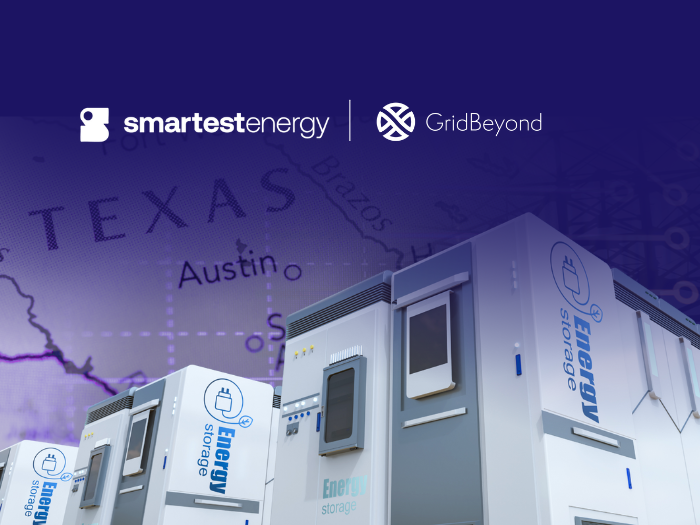News
better business decisions
Posted 3 weeks ago | 6 minute read

Q&A: Why 100% revenue sharing can be real in PJM demand response
With the 2026 PJM capacity auction approaching, we are hearing a lot of questions from customers trying to navigate competing claims and conflicting information in the demand response market.
In this article we speak to GridBeyond’s Business Development Director (PJM) Nick Guay to address the most common questions we are receiving and to set the record straight on what GridBeyond offers.
Q: Is demand response still relevant?
A: Demand response is more essential than ever. Capacity and transmission charges can account for up to 50% of many customers’ energy bills, making DR a cornerstone of any comprehensive energy strategy. Despite what some headlines might suggest, PJM continues to value demand response as a critical resource for grid reliability and cost management. The market isn’t disappearing; it’s evolving, and customers who participate strategically are seeing significant benefits.
Q: We’ve heard claims of “100% revenue sharing” before. Why should we believe it this time?
A: That’s exactly the right question to ask and scepticism is justified. The demand response industry has a track record of promises that come with hidden caps, administrative fees, and performance penalties that erode the value customers expect.
At GridBeyond we offer 100% capacity revenue sharing backed by a partnership with a major utility provider. This isn’t marketing language; it’s a structural advantage. Our utility partnership provides the financial backing and operational infrastructure that allows us to offer genuine 100% revenue sharing without the caveats that other providers typically attach.
When we say 100%, we mean:
- 100% of your capacity revenues with no caps or thresholds
- No hidden administrative fees deducted from your payments
- No revenue clawbacks disguised as “performance adjustments”
Your revenue is your revenue. Period.
Q: How does GridBeyond’s utility partnership change the equation?
A: Our utility partnership fundamentally changes the economics and risk profile of our offering. The utility backing provides the capital strength to absorb market risks that other providers pass on to customers through complex contract terms and penalties. We leverage utility-grade operational capabilities to support your performance, rather than simply monitoring and penalizing it. Our business model isn’t built on taking a cut of your capacity revenues or profiting from performance penalties. The utility partnership allows us to generate value differently, which means your success is our success.
Q: What’s the value of having a guaranteed “floor”?
A: Many businesses naturally focus on the idea of getting 100% of the upside, but in practice, the guaranteed floor, meaning the minimum return or the completely risk-free position you hold, is often more valuable. The simplest way is to think of the floor as a free insurance policy. It shields you from negative outcomes, and you do not have to pay anything for that protection.
This matters because upside is never guaranteed. PJM prices move, the rules governing the market can shift, and operational circumstances can change in ways that affect your ability to earn. What looks like a strong revenue opportunity today can easily shrink in the future. The floor, on the other hand, is certain. When you have a guaranteed baseline or a position where you cannot lose, you remove the entire downside. Eliminating risk often raises the true economic value of a deal even if the expected revenue does not change, because your outcome is stabilized and insulated from volatility.
Q: What are the performance requirements, and what happens if we can’t meet them?
A: Let’s be transparent: PJM has real performance requirements, and every demand response provider must meet them. Anyone who tells you otherwise isn’t being honest about how the market works.
The difference is in how we approach performance. Our utility-backed infrastructure includes operational support to help you meet performance obligations before issues arise. We conduct thorough upfront assessments of your capabilities to ensure we’re not enrolling capacity you can’t reliably deliver. When challenges occur—and they sometimes do—we work with you to solve problems rather than simply applying penalties. Performance matters because grid reliability matters. Our goal is to help you succeed, not to profit from your challenges.
If you can’t meet the 2026 auction requirements, speak to us and we can help you aim for 2027 participation.
Q: How do we know GridBeyond will deliver on these promises?
A: Review our contract terms with your legal and procurement teams. Compare our offering side-by-side with competitors. We’re confident that when you do your homework, GridBeyond’s combination of 100% revenue sharing, utility backing, and transparent approach will stand out.
Q: What should we be asking other demand response providers?
A: Whether you’re evaluating GridBeyond or any other provider, ask:
- what exactly is included in the revenue share? Are there any caps, thresholds, or administrative fees? Can you provide specific examples with real numbers from recent auctions?
- what are the performance requirements? What support do you provide to help customers meet them? What happens when challenges arise?
- how does your company make money? Understanding this helps you understand where your interests align.
- who stands behind your program financially? What happens if market conditions change dramatically?
The providers who give clear, confident answers to these questions are the ones worth your consideration.
Q: What’s the timeline for getting involved in the 2026 auction?
A: The 2026 PJM capacity auction is approaching, and preparation takes time. We need to assess your facilities, model your capabilities, and ensure all registrations and compliance requirements are met well before the auction.
If you’re interested in participating, now is the time to start conversations. We offer no-obligation consultations to discuss your specific situation, answer your questions, and help you determine whether demand response aligns with your operational capabilities and business objectives.
Q: What’s GridBeyond’s bottom line on PJM demand response?
A: The demand response industry has earned its reputation for complexity. But the market works best when customers make informed decisions based on accurate information; not fear, hype, or unrealistic promises. At GridBeyond, we believe transparency isn’t just good ethics, it’s good business. We’re committed to transparency, education, and delivering exactly what we promise.
Our utility-backed model allows us to offer terms that other providers can’t match; genuine 100% revenue sharing, robust operational support, and a partnership approach that aligns our success with yours. We’re not the provider making the biggest promises. We’re the provider delivering on them.
Contact GridBeyond today for a no-obligation consultation on PJM demand response participation.






